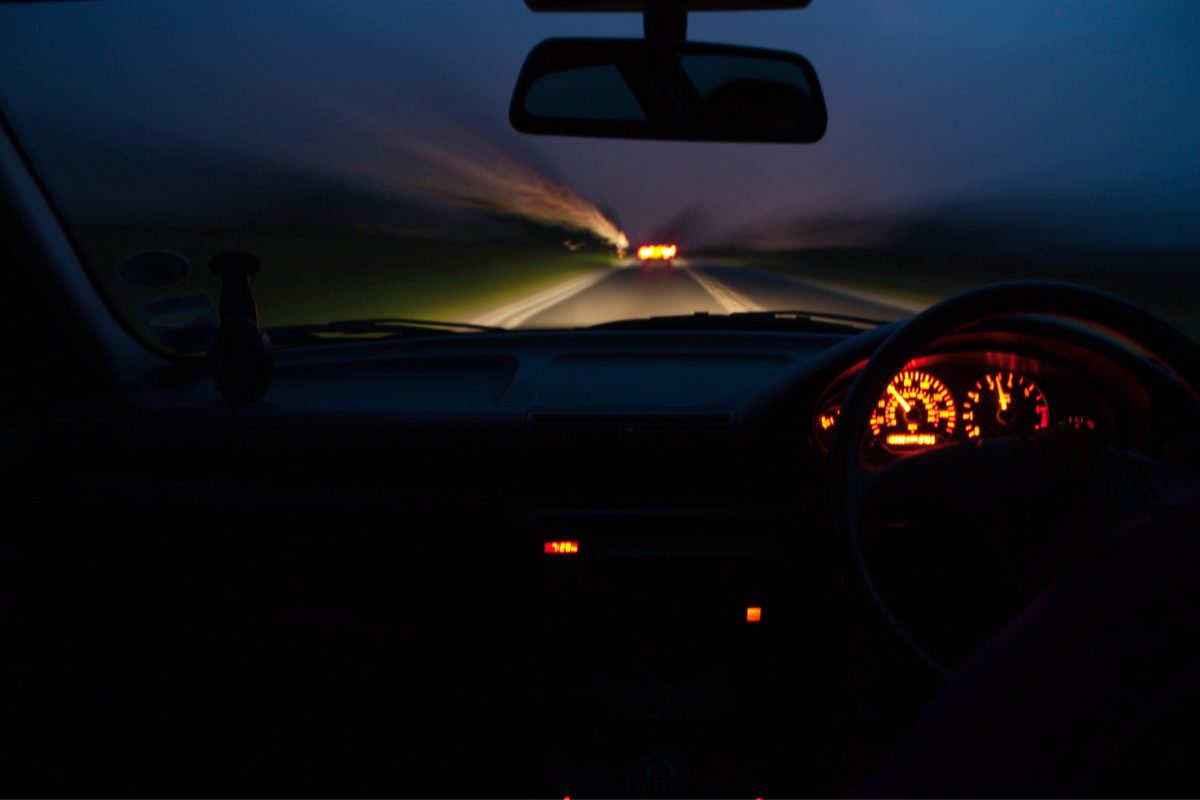There’s no doubt that driving in the dark is more dangerous. According to research, fatal accidents are three times more likely at night compared with the daytime. Combine less visibility with other factors, such as poor weather conditions or being tired, and this can dramatically increase the chances of getting into an accident. So to keep you safe on the road after sundown, we’ve put together a hit list of our top safety tips for driving at night.
1) Keep your windscreen clean
Make sure your windscreen and windows are clean, inside and out, as this should help you see better when driving at night. That built-up grime can increase the glare from other cars and street lights, ultimately making it harder for you to see the road. Dirty and damaged headlights also shine less light on the road ahead, which again, interferes with how well you can see. And don’t forget it’s also a good idea to clean your rearview mirror regularly.
2) Use headlights and fog lights
Using your headlights and fog lights can help you see the road ahead more clearly. It will also help others see you better. So when driving at night, remember to switch on your dipped headlight as early as possible so others can see you well in advance.
3) Make sure your headlights work before hopping in your car
It’s basic but worth repeating. Make sure your headlights and fog lights are working when you drive at night. It doesn’t take long to check fuses and bulbs. Spending five minutes checking your lights can save you a lot of trouble in the long run.
4) Be extra alert when driving at night
Be extra alert when you drive at night. This is particularly important if you’re tired, or if it’s raining heavily. We’re all in a hurry to get home, but it’s much more likely that you’ll arrive safely if you slow down and don’t tailgate. You can estimate your stopping distance and time by using your headlights. You are too close if you can’t stop inside the illuminated area!
The 3-second rule is another technique to estimate your distance from the car in front of you: there should be at least a 3-second gap between you and the same region of the road as the vehicle in front of you passes the landmark (a tree, a road sign etc.). Slow down if it takes less than three seconds to catch up!
5) Avoid driving if you have poor night vision
In general, driving at night tends to be more dangerous than driving during the day. A number of studies suggest that drivers with impaired vision are twice as likely to have an accident. Just thinking about getting behind the wheel might invoke stress if you’re constantly squinting at night. So if you have poor night vision, it’s best to try and avoid driving after the sun sets.



